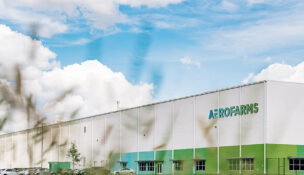Virginia sees a drop in number of farms
The number of farms in Virginia is dropping, but that doesn’t mean the state’s agricultural economy is declining. Virginia saw an increase in its number of large farms from 2011 – 2012, the time frame for the state’s most recent official estimates.
According to the National Agricultural Statistics Service, the number of farms in Virginia was 46,200 in 2012 — 200 fewer than the year before. The number of small farms generating $10,000 or less in gross income dropped by 500 in that time period.
Jim Pease, professor of agricultural and applied economics at Virginia Tech, said in a news release that the shifts in farm numbers represent the normal back-and-forth between economic sales class categories. “There’s nothing remarkable,” he said. “Some smaller farms got larger, and the larger farms expanded.”
In fact, the number of large farms increased from 2011 to 2012. There were 100 more farms generating between $250,000 and $500,000 and 100 more farms earning more than $500,000.
Pease noted that the majority of farms in the Old Dominion are much smaller. There are only 4,200 farms he would consider full-time operations. “Forty-two thousand of our 46,200 farms sell less than $100,000 in product, so they obviously are heavily or completely dependent on off-farm employment,” he said.
“Those larger farms are doing that much more; they’re prospering, and they’re growing. It’s just that there are not very many of them. The availability of fertile cropland and all the complexities of developing larger livestock operations are preventing many of them from growing even larger.”
Dairy farms have definitely seen a decline. There were more than 1,000 dairies in Virginia a decade ago, and now there are fewer than 700 farms producing milk for human consumption.
The yearlong delay in passing a new federal farm bill is one factor hurting dairymen, Pease said. Increased regulatory and labor costs, plus the uncertainty of finding qualified help, make it difficult for many dairy farms to generate a profit.
Farming in general remains a challenging occupation, he said. “It continues to be more and more important to specialize in something. The days of a farmer raising a little bit of this and a little bit of that are gone. And if you’re trying to hold a full-time job down and run a farm at the same time, it’s harder and harder to do that. It never has been easy, but now it’s more difficult than ever.”
t
















